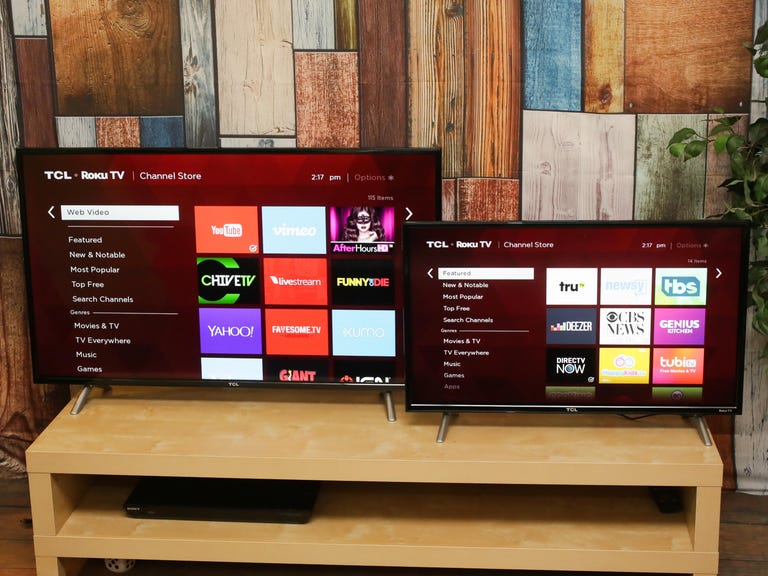When it comes to purchasing a new TV, size matters. The size of your screen can affect your viewing experience and the overall aesthetic of your living space. However, it can be challenging to understand the dimensions of a TV and how it relates to the size of your room. In this article, we will break down TV dimensions and provide you with the information you need to make an informed decision.
TV Dimensions: What Do They Mean?
TV dimensions refer to the size of the screen, which is measured diagonally from one corner to the opposite corner. For example, a 55-inch TV has a diagonal length of 55 inches. However, the dimensions of a TV are not just limited to the diagonal length. The screen width and height are also important factors to consider.
The screen width is the distance from the left side of the screen to the right side, while the screen height is the distance from the top of the screen to the bottom. These dimensions are essential to ensure that your TV fits perfectly in your space and provides you with the best viewing experience possible.
TV Dimensions: How to Choose the Right Size?
Choosing the right TV size can be a daunting task, but there are a few things to consider to make the process easier. The first thing to consider is the size of your room. The distance between your TV and the seating area is crucial for optimal viewing. The general rule of thumb is to have a viewing distance of 1.5 to 2.5 times the diagonal length of your TV.
For example, if you have a 55-inch TV, you should sit between 7.5 to 12.5 feet away from the screen. If you sit too close, the image may appear pixelated, and if you sit too far away, you may miss out on the details.
Another factor to consider is the layout of your room. If you have a small space, a larger TV may not fit well, and it may overpower your room. On the other hand, a smaller TV may get lost in a larger space. Consider the size of your room and the placement of your TV to determine the best size for your needs.
TV Dimensions: Bezel and Actual Screen Size
When shopping for a TV, it’s essential to consider the bezel and the actual screen size. The bezel is the frame around the screen, and it can vary in size. The actual screen size is the size of the screen itself, excluding the bezel.
For example, a 55-inch TV may have a 0.5-inch bezel on all sides, which would make the actual screen size 54 inches. It’s essential to understand the difference between the bezel and the actual screen size to ensure that your TV fits perfectly in your space.
Understanding TV dimensions is crucial when purchasing a new TV. The size of your screen can affect your viewing experience and the overall aesthetic of your living space. When choosing the right size, consider the size of your room, the layout, and the viewing distance. It’s also important to understand the difference between the bezel and the actual screen size. By taking these factors into consideration, you can find the perfect TV for your needs.

Dimensions of a 42 Inch TV
A 42-inch TV screen typically has a width of approximately 36.6 inches, including the bezel. The bezel is the frame around the screen that may vary in size depending on the TV model. It is important to note that these measurements may differ slightly between brands and models, so it is always recommended to consult the manufacturer’s specifications for exact dimensions.
Width of a 55 Inch TV
A 55-inch TV has a width of 47.9 inches, which is equivalent to approximately 121.7 centimeters or 1.217 meters. The width of the TV is measured diagonally from one corner of the screen to the opposite corner, and it is the most common way to describe the size of a TV. The width of the TV is an important factor to consider when choosing a suitable location for the TV, as it determines how much space the TV will take up on a table or wall mount. Knowing the width of the TV can also help you calculate the ideal viewing distance for an optimal visual experience.
Dimensions of a 50 Inch TV
A 50-inch TV typically has a diagonal length of 50 inches, which means that it measures 43.6 inches or 110.7 centimeters from the upper left side to the upper right side. The height of a 50-inch TV is usually around 24.5 inches or 62.2 centimeters. It’s important to note that the exact dimensions may vary depending on the specific model and brand of the TV. If you’re looking for more precise measurements, it’s always a good idea to check the product specifications provided by the manufacturer.
Measuring a 43 Inch TV
To measure a 43-inch TV, you need to measure the diagonal length of the screen from one corner to the opposite corner. This means you need to place your measuring tape or ruler at one corner of the TV screen and stretch it diagonally to the opposite corner. This diagonal measurement will give you the accurate size of the TV screen, which is typically measured in inches. It is important to note that the screen size is different from the overall size of the TV, which includes the bezel and other components. In addition, some manufacturers may round up or down the screen size to the nearest inch, so it is best to check the product specifications for precise measurements.
Conclusion
TV dimensions are an important consideration when purchasing a new television. The size of the screen is measured diagonally from one corner of the panel to the opposite corner, and it is important to take into account the recommended viewing distance for the size of the TV. This ensures that you have an optimal viewing experience with the right balance of immersion and comfort. Additionally, the width of the TV stand is also an important factor, as it determines the stability and placement of the TV in your home. By understanding the dimensions of your TV, you can make an informed decision when selecting a new television that fits your viewing preferences and your living space.








